Dawn in the City of Lights
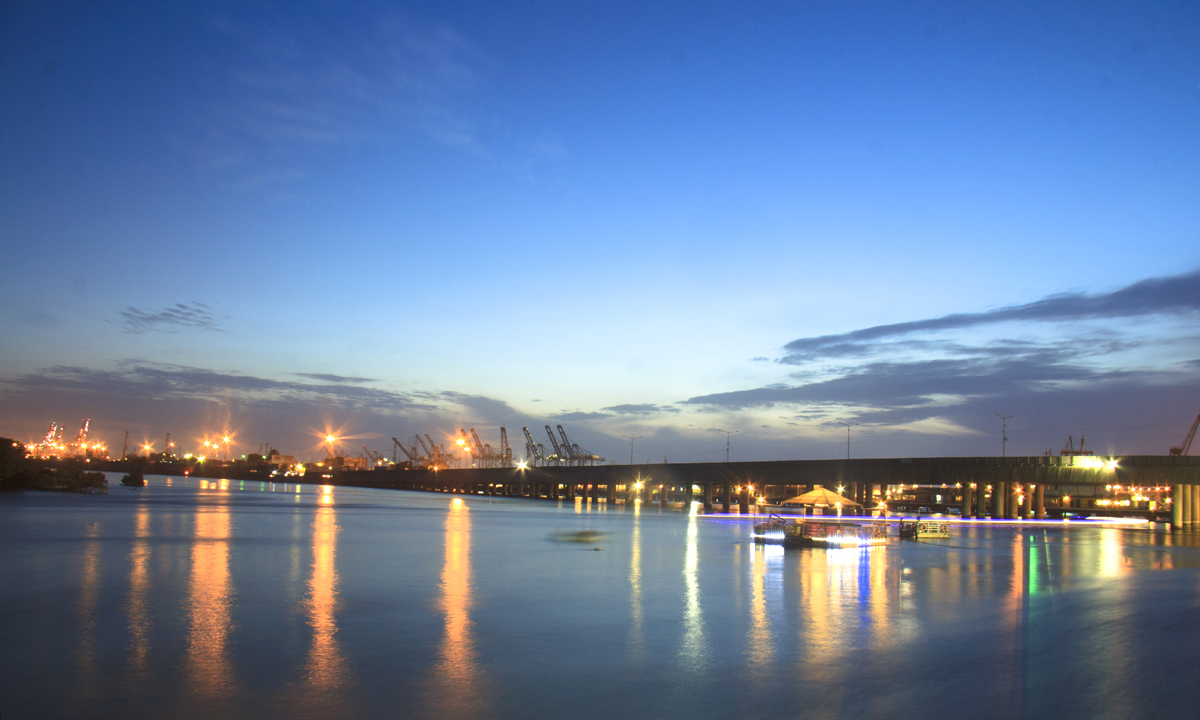
It was 6:50 in the morning when I stepped outside into the Karachi air, already heavy with heat, noise, and life. The sun had just begun its climb, but the city was wide awake. Karachi doesn’t sleep; it only dozes between the bursts of traffic, the shrill calls of street hawkers, and the constant background hum of generators.
I could hear horns echoing from the main road, each one impatient and urgent, like the heartbeat of a restless giant. Somewhere nearby, a vendor was calling out the day’s prices for vegetables. A motorcycle rattled past, carrying a family of four—father steering, mother balancing sideways with a child in her lap, and another clinging tightly behind. It was chaos, but it was also energy.
Behind me stood Frankie, my loyal motorcycle, finally free of the bureaucratic cage that had trapped it for three long days. Seeing it again filled me with relief and gratitude. I ran my hand along the handlebars, feeling the dust that clung to its frame after shipping. “Good morning, Internet,” I said into my camera, voice filled with excitement. “We are in Pakistan. The journey starts again.”
It wasn’t just another day. It was the rebirth of my adventure.
Why Karachi, Why Now?
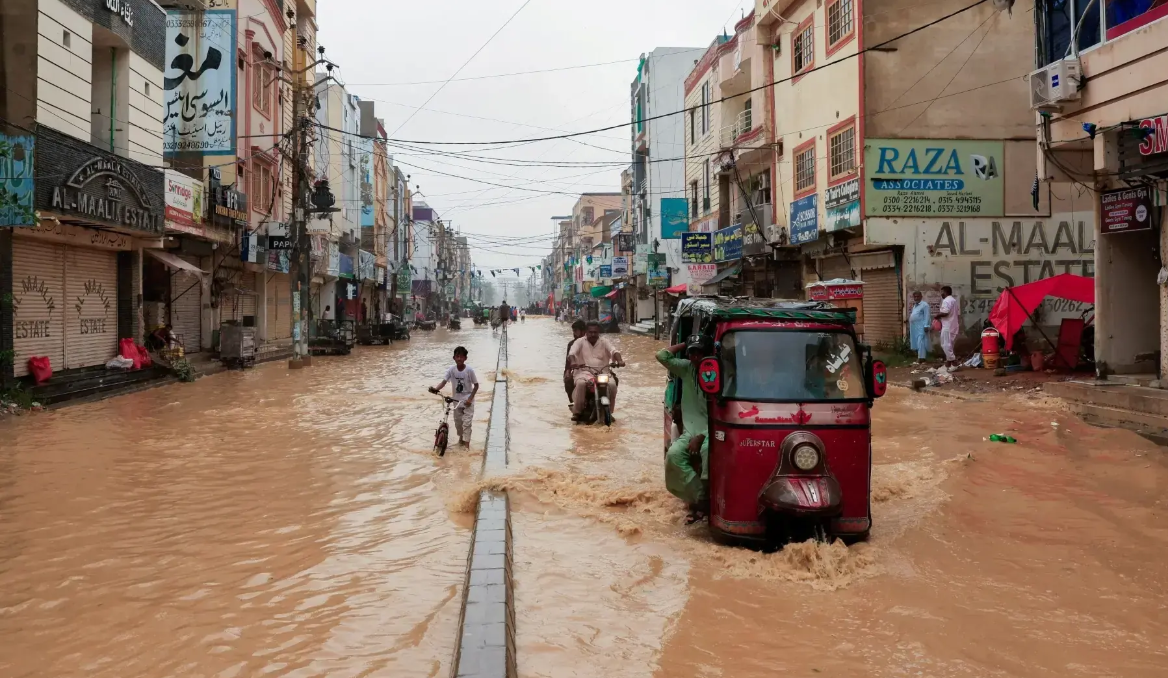
The decision to start in Karachi was not random. From Dubai, I knew I had to cross the Gulf of Oman to continue eastward. The easiest option, at least on paper, was Iran. I had been there before. In Season 1 of my journey, I had crossed into Bandar Abbas by ferry, and the process was relatively simple.
But the truth is, travel isn’t only about geography—it’s about history, politics, and sometimes, the invisible weight of your own past. My earlier video about petrol smugglers in Iran had left me uneasy. Returning there felt risky. I didn’t want shadows following me.
That left Pakistan. A country I had long dreamed of riding through. For years, I had heard about the Karakoram Highway, about Gilgit and Hunza, about the valleys carved by glaciers and the peaks that pierced the sky. Pakistan’s north was a dreamland for bikers and adventurers, but before I could reach those mountains, I had to start somewhere. Karachi, the port city, the economic hub, the “City of Lights,” became my gateway.
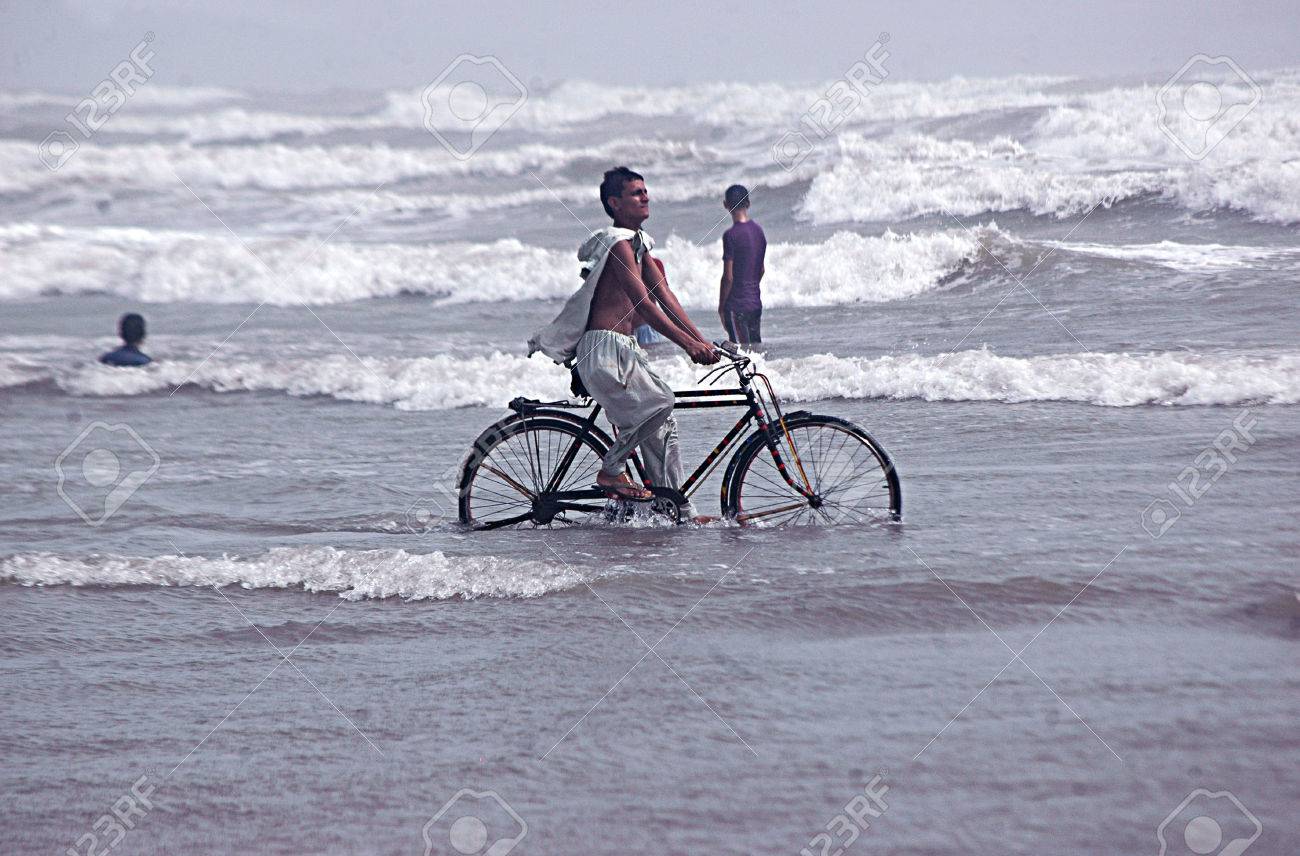
There was, however, no ferry linking Dubai to Pakistan. Sea freight was possible but painfully slow—weeks of waiting, confusion at ports, and countless delays. I knew from experience that sea freight could easily turn into a nightmare. Air freight, though more expensive, offered speed and control.
So Frankie flew.
In Dubai, the process was astonishingly smooth. Crating the bike took little time, paperwork was handled with efficiency, and within hours my motorcycle was in the belly of a plane bound for Karachi. Watching the crate being sealed, I felt both nervous and hopeful. This was the final step before my journey could restart.
But nothing could prepare me for what awaited on the other side.
Wrestling with Bureaucracy In Karachi Port
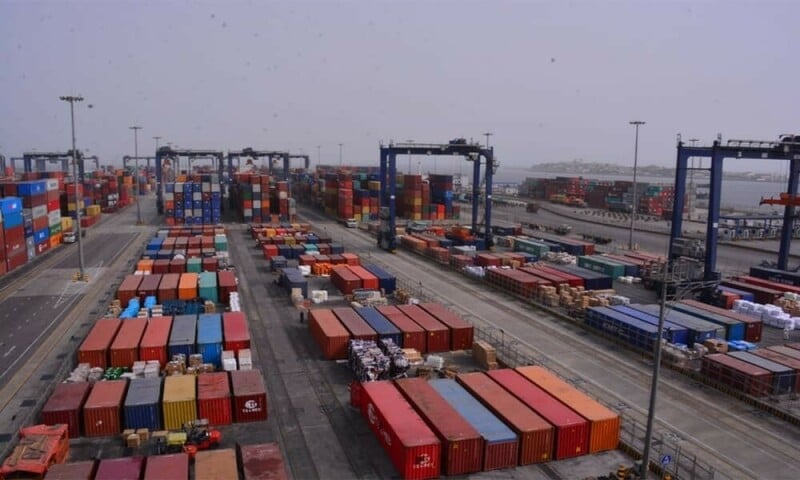
If Dubai was a lesson in efficiency, Karachi was a masterclass in endurance.
The customs building at Jinnah International Airport was a maze of faded walls, overstuffed files, and slow-moving fans that only pushed hot air around. For three days, I became a familiar face there, walking from office to office with papers in hand.
Each morning began the same way: I arrived at 11 a.m., hopeful that today would be the day Frankie was released. Each evening ended the same: walking out around 7 p.m., drained, sweating, my file a little thicker, but Frankie still trapped inside the warehouse.
The Carnet de Passage, that little booklet recognized by customs in dozens of countries, was a complete mystery here. Most officers had never seen one before.
“What is this?” one asked, flipping through the pages as though it were a strange foreign novel.
“It’s like a passport for the motorcycle,” I explained. “It guarantees that the bike will leave the country.”
He frowned, muttered something in Urdu, and called a colleague. Soon, I was sent to another counter, then another.
At one point, I had to climb two flights of stairs to get a single stamp, only to be told I needed a signature from the very office I had left an hour earlier. The cycle repeated endlessly.
But persistence is the traveler’s greatest ally. On the third day, something shifted. A senior officer, perhaps tired of seeing me every morning, finally pushed the paperwork through. The warehouse doors opened.
There was Frankie—dusty, but intact—rolling out of its crate. The moment was emotional. I placed my hand on the tank, whispered a quiet, “We made it,” and felt a surge of energy. The ordeal was over. The road awaited.
First Ride, First Chaos
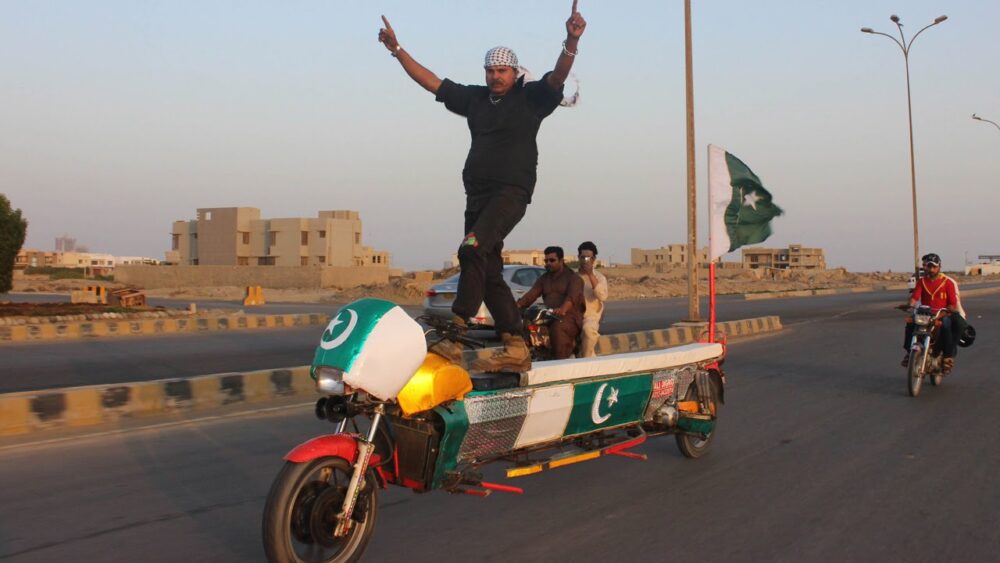
Freedom came with chaos.
Karachi traffic is unlike anything else. The road isn’t a place of order; it’s a living organism. Cars, buses, motorbikes, donkey carts, and pedestrians all move at once, weaving and honking in a rhythm only locals understand.
For me, the biggest challenge was not the congestion but the side of the road. After months of riding on the right, Pakistan’s left-hand system felt alien.
“Left side, left side,” I kept repeating inside my helmet. But habits are hard to break.
At a petrol station, I fueled up—95 octane, just to be safe. But leaving the station, I made a mistake. I found myself going 180 degrees in the wrong direction, directly into oncoming traffic.
Trucks bore down on me, horns blaring, lights flashing. My heart raced as I desperately searched for a U-turn. A man leaned out of his car window, laughing. “Left! Left!” he shouted. Embarrassed, I waved, corrected my mistake, and carried on.
It was a baptism by fire.
On the Road North
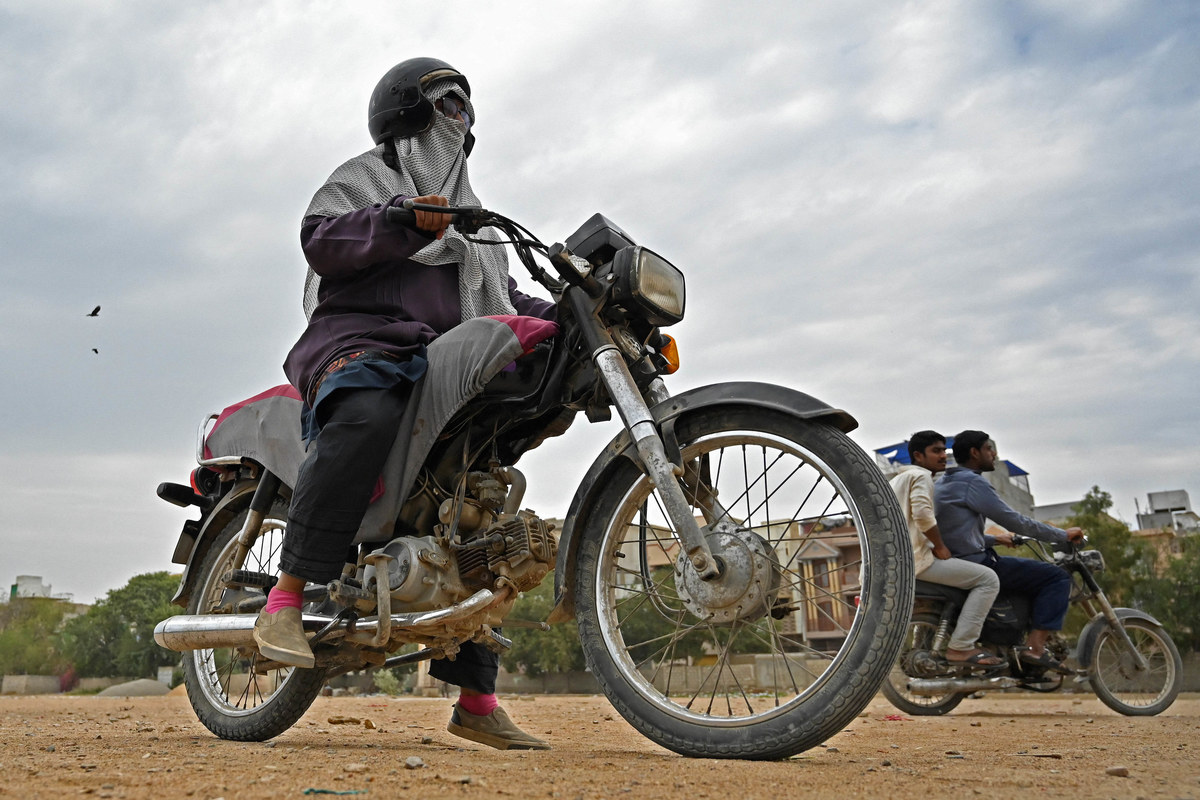
The plan for the day was modest: reach Sehwan, about 320 kilometers north. It wasn’t a huge distance, but in Pakistan, motorbikes are banned from the motorway. That meant detours, smaller highways, and side roads winding through villages and farmland.
As I left Karachi behind, the scenery shifted. The skyscrapers and billboards gave way to open plains, fields of sugarcane, and clusters of mud-brick houses. Along the road, life unfolded in vibrant detail.
Children waved enthusiastically, shouting “Hello! Hello!” as I passed. Donkeys pulled carts piled high with sugarcane, their small frames straining under the load. Women walked gracefully, balancing clay pots or bundles of firewood on their heads. Old men sat on charpoys under trees, sipping tea and watching the world pass by.
And then there were the trucks.
Pakistan’s Rolling Art
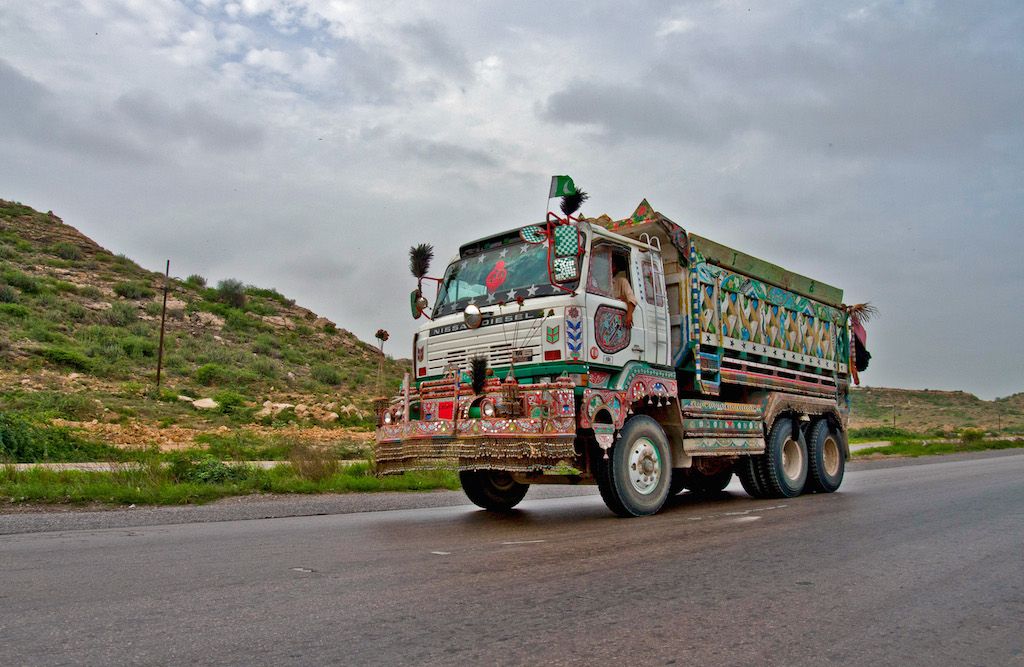
Nothing prepares you for Pakistan’s trucks—known globally as “jingle trucks.” They are not just vehicles; they are moving canvases.
Every truck is hand-painted with flowers, birds, landscapes, and geometric patterns. Chains dangle from the sides, jingling as they move, giving them their name. Some are adorned with mirrors that catch the sunlight, others with elaborate wooden carvings.
I slowed often just to admire them. One truck had goats perched casually on its roof, tied down with ropes as though it were the most normal thing in the world. Another carried motorbikes stacked dangerously high. Even oil tankers were decorated, with birds and calligraphy painted in bright colors.
It was as if every driver wanted to turn his truck into a piece of art, a statement of pride on wheels.
Heat Like Fire
By midday, the heat became unbearable. The temperature climbed to 44°C, though I didn’t know it until later. All I knew was that the air itself burned.
Inside my helmet, sweat poured down my face. My riding gear felt like a furnace. Each gust of wind was hotter than the last, like opening the door of an oven. My cameras shut down one by one from overheating. Even my phone gave up, its screen going black.
But life around me carried on. Farmers worked their fields. Children played barefoot in the dust. Trucks thundered past, overloaded yet unstoppable.
I realized something: in places like this, the line between comfort and survival is thin. Stopping would only make the heat worse. So I pushed on, kilometer after kilometer, clinging to the thought of Sehwan.
Arrival in Sehwan
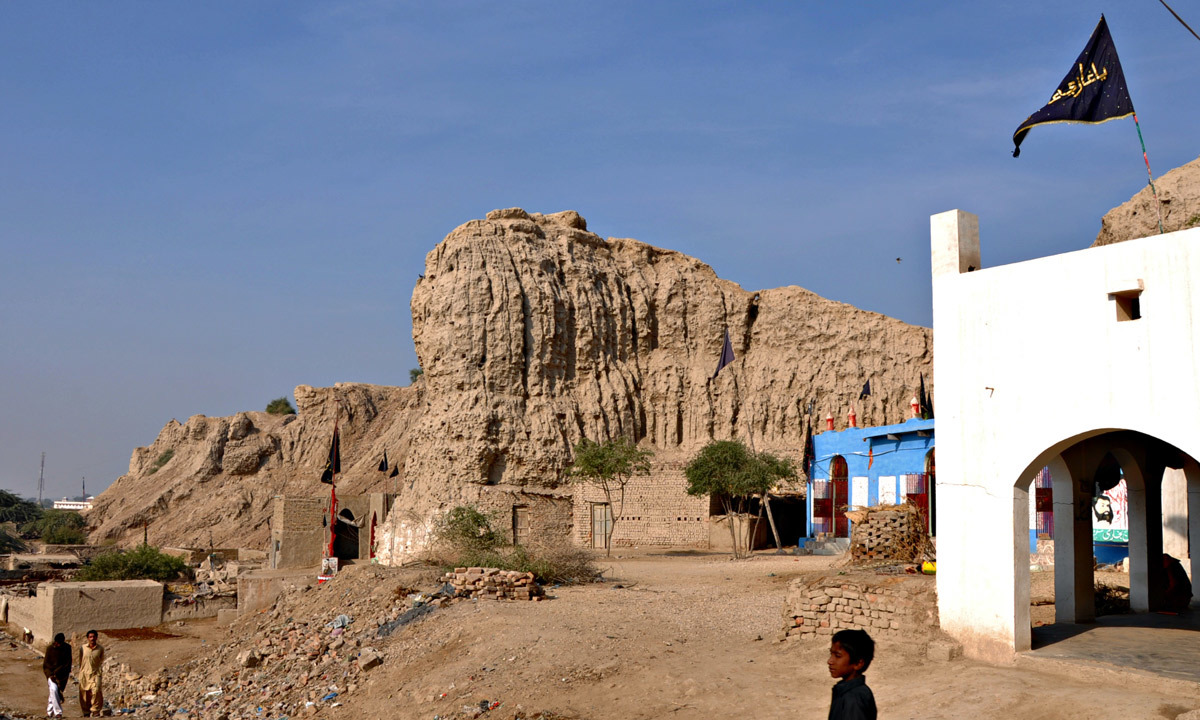
By evening, I rolled into Sehwan. The sun was dipping, painting the horizon orange, but the air was still hot, thick, and relentless.
Sehwan is not a large town, but it is famous across Pakistan for one thing: Lal Shahbaz Qalandar, the Sufi saint whose shrine draws pilgrims from every corner of the country. Though I did not visit the shrine that night, just knowing I was in such a historic place added weight to my arrival.
I found a guesthouse with two essentials: air conditioning and a fan. After hours of riding, they felt like luxuries from another world. I lay on the bed, letting the cool air revive me, before heading out for food.
Dinner was simple—dhal, chickpeas, and chapati—but it was unforgettable. The spices lifted my spirit. Cumin, turmeric, garlic, and chili blended into a warmth that felt like comfort itself. After such a day, every bite was a gift.
Reflections in the Night
That night, lying under the hum of the fan, I thought back on the day.
This first ride had tested me in every way. The customs ordeal had drained my patience. The traffic had challenged my instincts. The heat had pushed me to my limits. Yet through it all, there was joy.
Joy in the chaos of Karachi, where survival was an art.
Joy in the colors of trucks that turned highways into moving galleries.
Joy in the kindness of strangers who smiled, waved, and asked, “Where are you from?”
The road ahead was long. The Indus Valley stretched endlessly, and beyond it lay the mountains—the Karakoram, the Himalayas, the Hindu Kush. Those peaks were my dream, but they were still far away.
For now, though, I was content. Frankie and I were on the road again. The journey had restarted. And that was enough.








